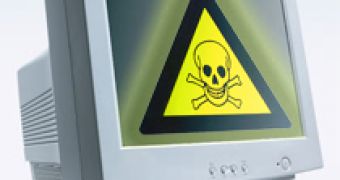Supposing you were a hacker, how would you try to get control over a computer connected to the Internet? Obviously, by exploiting a vulnerability in the software installed on the system, or by dropping an infection on it. Today's piece of news refers to the second solution, as one more Trojan file is being used by the hackers to obtain control over an affected system. Toxic Backdoor, also knows as Backdoor.Delf, is supposed to be dropped on a computer and let the hacker connect to it, in order to launch all kinds of processes. 2Spyware.com gave Toxic Backdoor a severity scale of 78 out of 100, which underlines the danger raised by the Trojan.
"This backdoor trojan has many variations, this is why you can never be sure whether you are protected from newest versions of the Toxic Backdoor. This pest is designed to grant hackers a partial control over the infected machine and the ability of performing a lot of operations with it. These operations may vary from annoying jokes to destructive activities, which can have you losing your private information", 2Spyware.com wrote in the security notification published today.
Toxic Backdoor is really clever, if you think that is hides from the user and stays in the background to avoid being spotted by the computer administrator. Sure, most antiviruses should already be able to detect and remove a potential infection with Toxic Backdoor, but it can also be manually removed from the computer.
In case you don't know for sure if you're really infected or not, you can check this by looking for toxic.exe, the process used by the Trojan. I know, this is not smart anymore because the executable file can be easily found with the Task Manager provided by Windows. Just right click on the Windows Taskbar, select Task Manager and look for the toxic.exe file in the Processes tab, click on it and choose End Task. Search for the same file in your computer and delete it. Simple as that!

 14 DAY TRIAL //
14 DAY TRIAL //